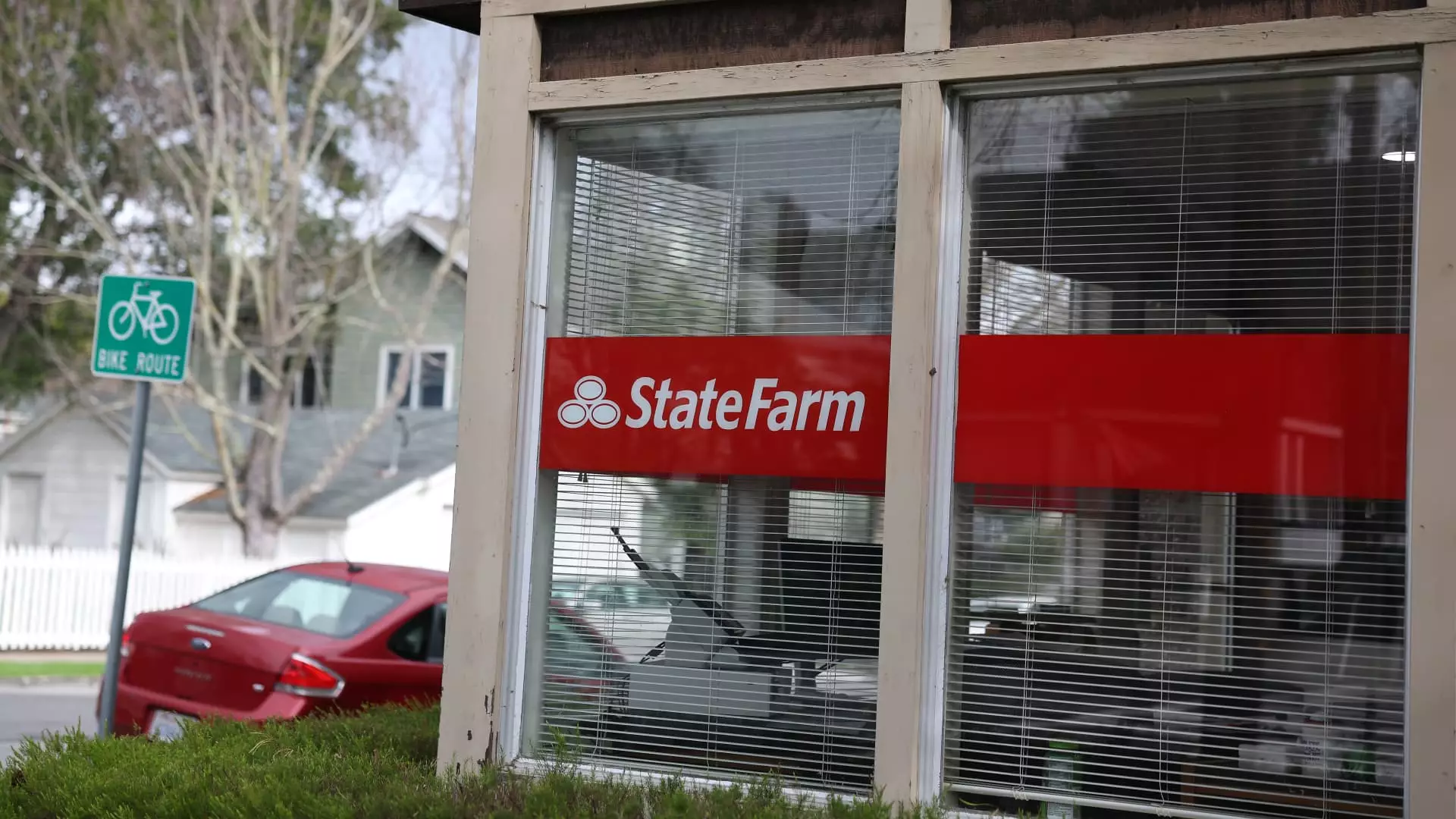As State Farm makes its compelling case for a massive rate spike in California, the stakes could not be higher. Proposals for hikes of 38% on rental dwelling policies and 17% on homeowners’ insurance reflect not just a response to catastrophic losses but an alarm bell signaling far more severe implications for the average Californian. Following historic wildfires that ravaged Los Angeles, which AccuWeather estimates resulted in damages soaring between $250 billion and $275 billion, State Farm’s precarious financial position has left many questions in its wake. The hearing unfolding in Oakland seems like a pivotal moment for the insurer and its nearly 3 million California clients, many of whom are now hanging on the brink of uncertainty.
The challenges currently faced by State Farm, as described by attorney Nikki McKennedy, are akin to a sinking Titanic with an iceberg in sight. The metaphor starkly illustrates the insurance industry’s systemic struggles within California. The lack of lifeboats—whether they manifest as affordable coverage options or sustainable business practices—may leave millions of Californians adrift should the company falter in its plea for rate hikes. While one might argue that adjusting rates to reflect real-world risk is necessary for survival, the ethical implications of such drastic increases raise serious concerns about the extent to which corporations are willing to sacrifice the financial stability of their clients for their own benefit.
The Dynamics of a Financial Crisis
With State Farm General commanding around 20% of California’s homeowners market, its financial health ultimately plays a pivotal role in the overall insurance landscape of the state. Its recent sliding credit rating, compounded by continuous losses, casts a shadow over the future of not just the insurer but also its policyholders. The nature of insurance relies on shared risk, and when an insurer like State Farm finds itself in this current predicament, the ripple effects reverberate through the lives of countless homeowners and renters.
Predictably, the insurance commissioner, who is limited in the extent to which they can approve rate hikes, finds themselves in a precarious position. The California Department of Insurance has cautiously supported State Farm’s rate hike proposals but faces mounting pressure from consumer advocacy groups like Consumer Watchdog. This friction hints at a polarized battleground between corporate ambitions and consumer protections, where the insurance company’s need for funding competes against the necessity to provide fair and reasonable coverage.
A Market in Turmoil: Natural Disasters as a Catalyst
The relentless tide of natural disasters over the past decade has dramatically altered the landscape of the insurance market in California. Insurers have been increasingly plagued by rising incidence and magnitude of calamities, primarily wildfires, leading to increasing costs at the same time that consumer demand for insurance continues to mount. As State Farm pulled out of the homeowners market in California in May 2023, the move stood as a warning signal of a market in turmoil. The combined impacts of these events lead to a growing reliance on the state’s insurer of last resort, the FAIR Plan. Yet, like an avalanche that gathers strength as it descends, this causes a spiraling effect where insurers increasingly shy away from the risks attributed to Californians seeking coverage.
Despite State Farm’s attempts to seek a lifeline through substantial rate hikes, the ensuing chaos demands a deeper reflection surrounding the sustainability of insurance practices in the state. Economic experts have asserted that California’s insurance mechanism is teetering on unsustainability. Without immediate changes, the cycle of crisis is inescapable. Janet Ruiz of the Insurance Information Institute rightly highlights the urgency of implementing a “Sustainable Insurance Strategy,” a timely framework poised to address underlying vulnerabilities.
Consumer Protection vs. Corporate Survival
The recent hearings and subsequent discussions surrounding rate increases hinge upon an intricate balancing act between consumer rights and corporate recovery. While some stakeholders argue in favor of the rate hikes as a necessary evil for long-term financial stability, others assert that the justification for such increases lacks rigor and credibility. Consumer protection entities, like Consumer Watchdog, argue that State Farm has failed to adequately substantiate its proposals. The recent reduction from 22% to 17% in requested hikes may appear positive on the surface, yet it raises critical questions regarding what constitutes a justifiable claim for an increase.
The looming question remains: Who bears the brunt of this impending crisis, and will the proposed measures translate into lasting equity across California’s diverse populace? As the hearing approaches its end, the anticipation is palpable—will the decision favor corporate resurgence or a more equitable approach to consumer needs? The outcome could potentially set a precedent for how insurance is structured and perceived across the state, shaping the future of countless families.

Leave a Reply